#native ecosystems
Text
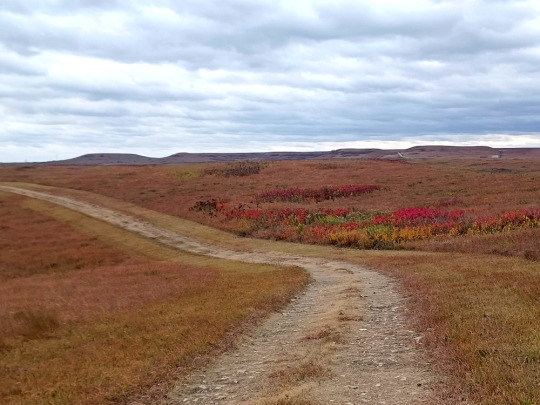

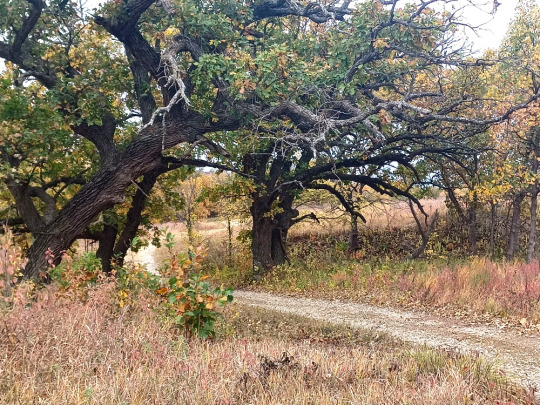
I am still decompressing from four days of driving, but I am intensely pleased that I got to spend a few hours walking the full six-mile loop at Konza Prairie Biological Station in the Flint Hills of eastern Kansas. I've been to plenty of old-growth forests, but this was my first time getting to explore an old-growth tallgrass prairie, and the oak groves that often form in low-lying areas. It was saved from being plowed under by all the dolomite stone just under the soil which made agriculture too difficult, other than cattle grazing. After driving for hours through cornfields and pastures full of non-native pasture grasses, it was such a relief to be able to immerse myself in a place that looks much like this entire landscape did for thousands of years. I know they're still doing restoration work there, since fire suppression has caused some imbalances, and of course the extermination of bison, but it's one of the best examples of North American tallgrass prairie still available today.
I have a lot more thoughts ruminating about this experience, but for now, enjoy a few pictures.
#Konza Prairie#tallgrass prairie#tallgrass#native ecosystems#old growth#prairie#grasslands#ecology#restoration ecology#Kansas#Midwest#North America#grass#grasses#nature#nature photography#travel
287 notes
·
View notes
Text

I made orbstructrions for making PollinatORBS (née seed bomb, but everything's so violent in the world, I didn't want the CHILDREN to see the word bomb. Or me. I don't want to see the word bomb if I don't have to. I am 35.)
Will the teachers I email this to use this worksheet? Maaaan who knows. Does the pollinatORB I drew kinda look like a turd thats being rolled by a dungbeetle? YEAH A LITTLE. But. Whatever kids. We're going with it.
Help a little bug near you. Look up native plants in your area. Plant a couple of em. Whisper to the first bug you see that you're happy to see them.
You can download the instructions here.
#pollinatORB#Look I know that planting plants isn't pollinating plants#don't overthink it#pollinators#local ecoystems#native ecosystems
112 notes
·
View notes
Text
"Marginal improvements to agricultural soils around the world would store enough carbon to keep the world within 1.5C of global heating, new research suggests.
Farming techniques that improve long-term fertility and yields can also help to store more carbon in soils but are often ignored in favor of intensive techniques using large amounts of artificial fertilizer, much of it wasted, that can increase greenhouse gas emissions.
Using better farming techniques to store 1 percent more carbon in about half of the world’s agricultural soils would be enough to absorb about 31 gigatons of carbon dioxide a year, according to new data. That amount is not far off the 32 gigaton gap between current planned emissions reduction globally per year and the amount of carbon that must be cut by 2030 to stay within 1.5C.
The estimates were carried out by Jacqueline McGlade, the former chief scientist at the UN environment program and former executive director of the European Environment Agency. She found that storing more carbon in the top 30 centimeters of agricultural soils would be feasible in many regions where soils are currently degraded.
McGlade now leads a commercial organization that sells soil data to farmers. Downforce Technologies uses publicly available global data, satellite images, and lidar to assess in detail how much carbon is stored in soils, which can now be done down to the level of individual fields.
“Outside the farming sector, people do not understand how important soils are to the climate,” said McGlade. “Changing farming could make soils carbon negative, making them absorb carbon, and reducing the cost of farming.”
She said farmers could face a short-term cost while they changed their methods, away from the overuse of artificial fertilizer, but after a transition period of two to three years their yields would improve and their soils would be much healthier...
Arable farmers could sequester more carbon within their soils by changing their crop rotation, planting cover crops such as clover, or using direct drilling, which allows crops to be planted without the need for ploughing. Livestock farmers could improve their soils by growing more native grasses.
Hedgerows also help to sequester carbon in the soil, because they have large underground networks of mycorrhizal fungi and microbes that can extend meters into the field. Farmers have spent decades removing hedgerows to make intensive farming easier, but restoring them, and maintaining existing hedgerows, would improve biodiversity, reduce the erosion of topsoil, and help to stop harmful agricultural runoff, which is a key polluter of rivers."
-via The Grist, July 8, 2023
#agriculture#sustainable agriculture#sustainability#carbon emissions#carbon sequestration#livestock#farming#regenerative farming#native plants#ecosystems#global warming#climate change#good news#hope
4K notes
·
View notes
Text
I think it's so adorable that early humans took wild gourds - a tiny fruit that hollows out as it dries, making it float - and decided to make something out of it

they thought the tiny fruit was so good that they bred it for thousands of years, making it larger to form into bowls and cups, and different shapes to become bottles and spoons

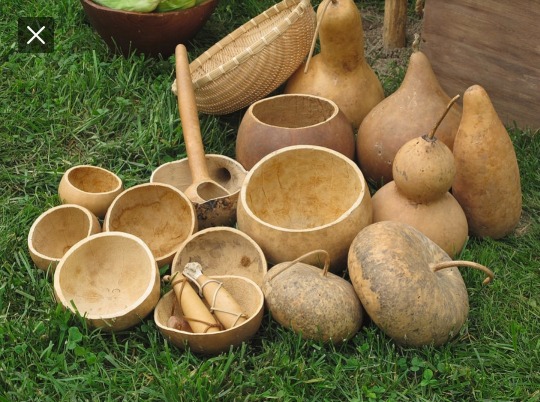
and musical instruments
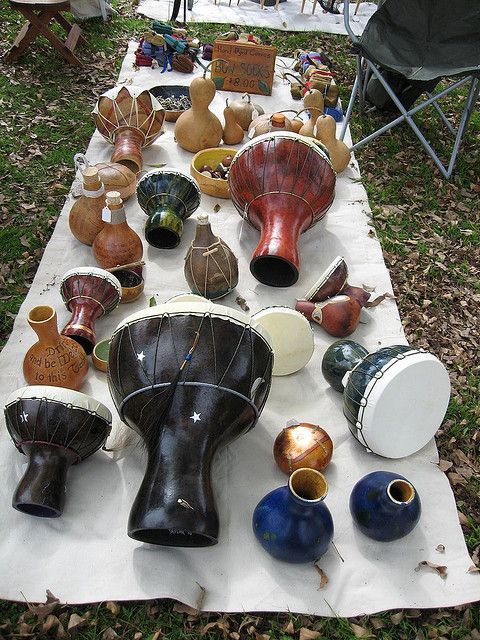

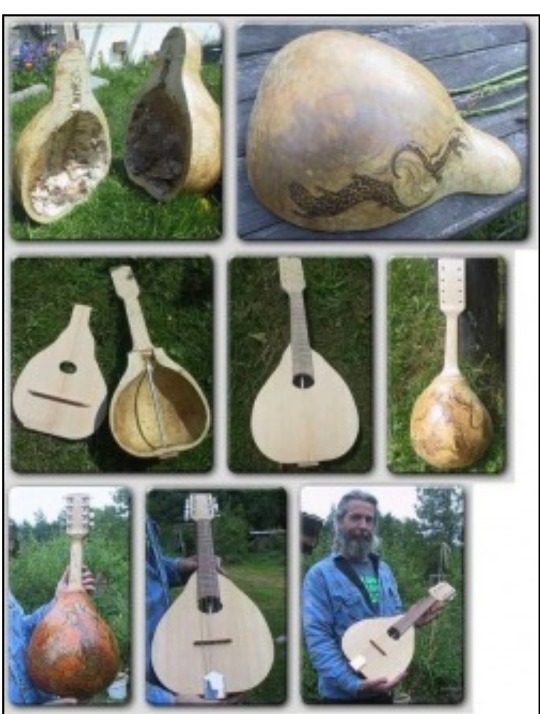
And then, people took the hollow gourds they farmed, and they turned them into houses for birds. We adapted them into the perfect houses for birds, and now there are specific breeds of birdhouse gourd just for making into birdhouses

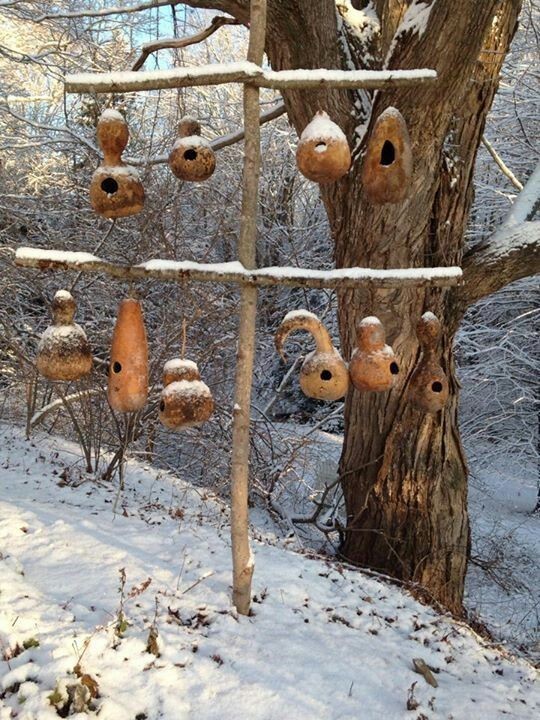
And humans dedicated gardening space and time and thousands of years of breeding to make the gourds so absolutely perfect for birds, that there is a species of bird that lives almost exclusively in them
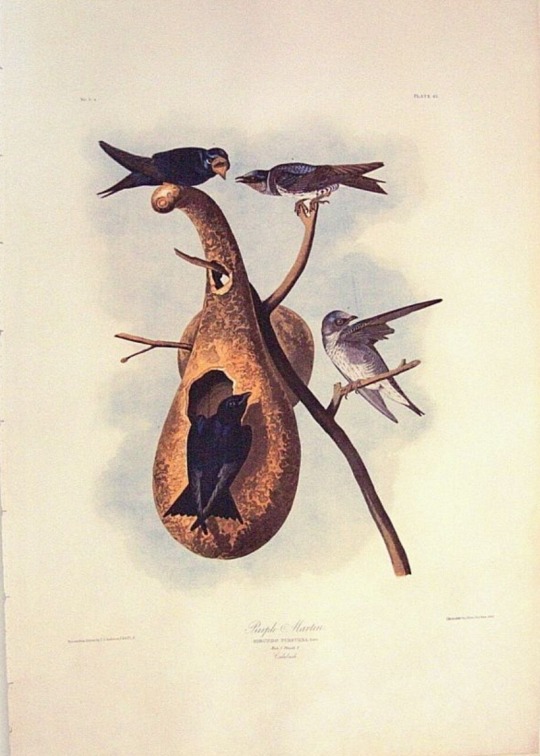
#yes I KNOW i posted about this the other day but *crying* i just love plant domestication and the history of agriculture#and humanity's positive affect on the ecosystems we live in#mine#image IDs in alt text#hmm. I'm gonna tag this#permaculture#just to pspsps @ that community to look at how cool gourds are please everyone grow birdhouse gourds and give cavity nesters places to live#i don't think mine will become fully ripe before i get my first frost :( next year i need to start gourds indoors#i didn't want to grow them before because i didn't have much garden space but now i do and i need to grow all of them#i might be. a little obsessed with gourds. but also i saw a pair of purple martins flying by the road last year#and i had never seen one before then! and i need to see more of them#i have a few hundred barn swallows but i need more birds flying around my house. more!!#and also i have a ton of invasive cavity nesting species around here. house sparrows and starlings.#gotta make up for those things competing with native birds for nest dites#*sites#the invasive birds very often win :/#that's why they're invasive#i really do need to start trapping them....
31K notes
·
View notes
Text
Forget hot girl summer it is
Citizen Science Summer!
Get on eBird, iNaturalist, Seek, whatever apps and forums are cool to you and discover the huge variety of life right under your nose! Snap some pics and record those critters! Rejoice for native bees and plants growing wild by the roadside!!
#ecology#citizen science#ebird#inaturalist#seek#nature#biology#native plants#ecosystems#citizen science summer
2K notes
·
View notes
Text
What feels so strange about growing plants, and making friends with plants, and generally being aware of my ecosystem, is that it's not a "head" knowledge, it's a "hands" knowledge.
It feels strange for me, at least. My formative years were spent in a homeschool co-op that was roughly 50% anti-vaxxers, so in spirit, I'm the sort that has yelled "just believe science!" until my throat hurt. I've clung to peer-reviewed papers, as an abstract concept, as the sole beacon of truth in a dark world, and found Facebook groups full of people that thought just like me: if it's not proven, if it's not science, it's false, and science is truth.
There are online communities of people who "believe in science," and t-shirts that affirm the wearer to "believe in science." This is not the worst place you can be, in a world where people believe things like "eating lemons makes your blood more alkaline, which cures cancer" and "polio was renamed to ALS in order to hide the fact that polio vaccines don't work."
However, science is not a doctrine. It's a process. It points to truth, but it doesn't produce truth as an end result. There is no end result. The results are endless, actually.
What word do I use to describe what I've been doing? I'm gardening, sure, but that makes it sound like I do things to plants, when mostly, the plants do things to me. I'm learning about the living things already around me. I've learned to identify so many plants, and I know about what role they serve in the ecosystem.
"Gardening" is a difficult word because it means planting things in the ground and tending to them, but plants plant and tend themselves. So since we have to use the word "gardening," we have to think of plants as either belonging to a garden or not, depending on whether a human put them there. Plants either grow on their own or a human, a "grower," "grows" them. Isn't it weird how that verb is transitive?
However, I understand now that even knowing the name of a plant is, in some way, "gardening" it, because it affects my behavior toward that plant, which is the thing that "gardening" is, just in a different amount.
Humans can transport seeds and plants, supplement nutrients and water, but this is just participation. A gardener doesn't create plants, they help them to grow. So it follows that any act of "helping" is also gardening—thinning out a stand of wild plants, moving a wild plant from one spot to another, choosing not to mow a wild plant down.
I have more of something than I used to. The thing that I have more of now is knowledge, but a lot of this knowledge isn't facts. Ecology is a science. Scientists study ecosystems. It is possible to know facts about ecosystems. But ecosystems are not made of facts.
I know that most people desperately need to know more about the ecosystems around them. They need to know about the plants and trees near them. I think this is literally essential to saving the world as we know it. But they don't need to learn facts—not just facts. They need to learn something Else.
For the past several months, I have been learning things that are not facts. I hesitate to call them skills. But they are like skills. Both gardening and plant identification are impossible to fully teach from a book or a written resource, because you have to know not what something is, but what it is like.
I rely on my senses—feeling the suppleness of a twig, the dampness of potting soil. Identifying plants is so hard starting out because the qualities that identify them best have to be experienced.
Back when I was first learning to identify trees, I discovered that there was a black walnut tree at the end of our road. I was just then entering the extremely frustrating reality of how many plants there are and how few photos of them at all growth stages exist on the internet. I didn't know what a fucking "petiole" was. Leaves all just looked like leaves and I wanted to cry.
But I tore a twig from one of the trees down at the end of the road, and I instantly knew it was a black walnut tree! And I couldn't describe to you how. I caught a whiff of the smell of the crushed leaves, and it pulled up a memory of the walnut trees at the farmhouse when I was a child, dropping their heavy green fruits all over the grass. I'm not even sure how to describe the smell. It's very fresh and spicy, but earthier and less "clear" than the word "fresh" would suggest.
And I identify a lot of plants in ways that you can't just...depict. Alianthus altissima, tree-of-heaven, is hard to draw or photograph in a way that lets you see through the picture what makes it distinctively Alianthus altissima. The best way to identify it is by its odor. Tear off a leafy twig and smell it—it smells exactly like peanut butter and the mustiness of a damp basement.
I am learning things that don't exist in books, that are specific to my immediate surroundings. The specific community of organisms found in my backyard, what they're doing. How my plant and animal neighbors are related, and how their relationships change.
I am learning just how little we know. There are so many plants, so many local plant communities. There are more relationships in an ecosystem than there are scientists that could possibly study them. I look up a question about a particular plant and there's just...nothing.
I have to use my own knowledge, my own observations. I have to do tiny science every day, where Big, Capital S Science can't help me. "Is this non-native plant harmful enough that it is better to get rid of it even if I can't replace it yet, or is it providing enough benefits to other organisms that it is better to let it stay?" Sometimes no website or book or article can answer this. Constantly I encounter this kind of question, and I have to observe and decide myself. I have to trust that I can be taught by my ecosystem, and that this knowledge is, in its own way, valid.
It is uncomfortable to be here. I want to convey my knowledge to others, but it sometimes feels almost pseudoscientific, superstitious. I want to be rational and rely on the experts, and teach other people to do so; I know that what "seems" right often isn't, and that personal observations are flawed, even useless, in many areas. But not only are these fuzzy, instinctual observations sometimes all we have, they are an essential skill that is needed to save our world.
There's also the fact that research doesn't happen fast enough to function all alone as a guide. Invasive species lists on state websites are basically decades out of date and not regionally specific enough. The Callery/Bradford pear tree, bane of my existence, is not "officially" designated an invasive species to my knowledge, and there is relatively little research on its role as an invasive species, but it is declared invasive, primarily by common consensus that it's Satan in tree form. Crowding and shading out other mid-succession shrubs and trees, forming thick, almost monoculture masses of ugly glossy foliage replacing whatever else would have grown there.
And the severe threat of the Bradford pear is specific to my region; its particular severity may be specific down to the square mile of land I live on. Some scientists may be studying it, but they're not studying my state, my county, my neighborhood.
It's insane how many TYPES of forests there are. You would think that within a specific biome and climate, a forest is a forest is a forest, but no. There are a bajillion specific associations of trees with specific relationships that form special ecosystems. It's insane how many types of moth there are, too. And it really blows your mind to look up a moth's host plants and read that we're not really sure of the full range of plants its caterpillars can eat.
You'll be reading something and it will say "We don't know this" but you will know, because you've seen it—and then you think to yourself, well, isn't that what people say about Nessie and Bigfoot and little green aliens? Can we trust what we observe for ourselves? Can we trust people to know what they see?
Maybe not—but we have to.
2K notes
·
View notes
Text

odo sketches
#ds9#deep space nine#odo#odo ds9#star trek#my art#finally started ds9 recently.. im enjoying it so far but i do miss the voiceover intros#also desperately want more trek content exploring alien animals(?) the crew should to an aquarium and just hang out#more parasites too but in the beautiful light of creatures that're important to their native planets/ecosystems#character design
111 notes
·
View notes
Text

#UndisturbedEnvironment
Natural environment undisturbed by humans.
#Undisturbed Environment#Undisturbed Ecosystems#The Heart of the Healer#Native Mohawk Land#Wilderness Need Protection#Wild Landscape#Photography#Nature#Mountainous Parts of the Northern Hemisphere#Canada#The RavenKeeper
388 notes
·
View notes
Video
home grown national park
https://homegrownnationalpark.org/
#tiktok#native plants#home grown national park#solarpunk#solar punk#DIY gardening#gardening#garden#Ecosystem#collective action
658 notes
·
View notes
Text
Happy International Day of Forests!
May every forest flourish in its unique diversity, providing diverse ecosystems and homes for all wildlife , oxygen for everyone, and sustain all life on earth - and may people, all humans wake up to their inherent worth and value, and protect them - and all native trees everywhere - from being cleared in the arrogance of anthropocentrism.
#Forests#International Day of Forests#Earth#21st March 2024#International Day of Forests 2024#International Day of Forests 21st March 2024#Nature#Trees#Ecosystems#Wildlife#Keep your native trees#Plants#Keep your native plants#Native plants#Native trees
36 notes
·
View notes
Text
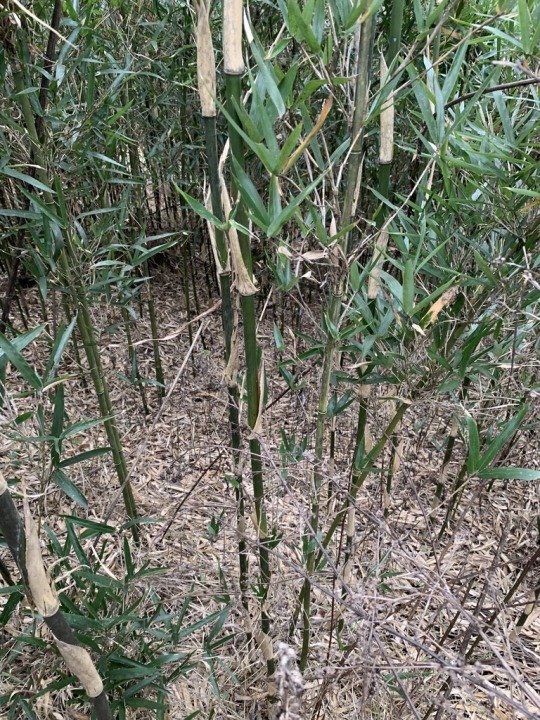



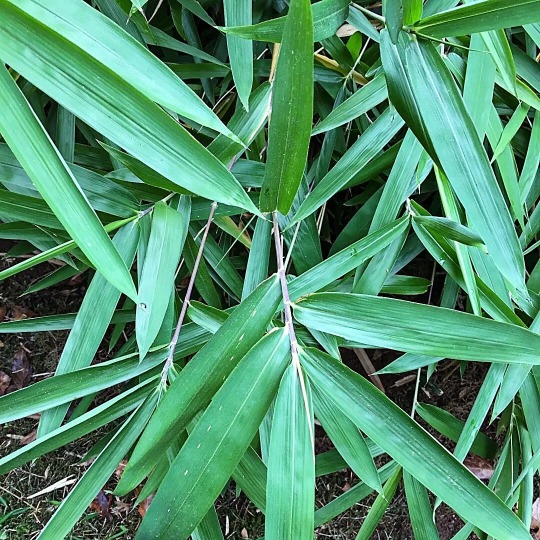
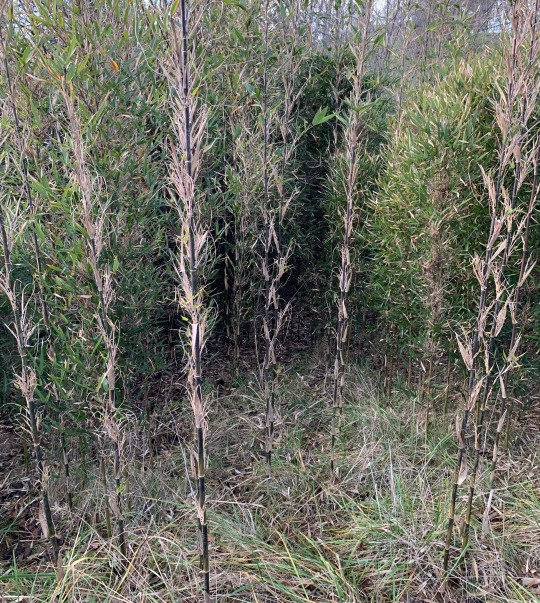
Cool Plant: Arundinaria gigantea
Giant River Cane
This plant is extra special! Not only is it one of three members of the genus Arundinaria, which together are North America's only native bamboo, it also once formed extensive bamboo forests in the American Southeast known as canebrakes, where the bamboo stalks could exceed 30 feet tall! The bamboo forests are thought to have covered 10 million acres of the southeastern United States.
River cane grows in damp areas such as low-lying woods and the edges of creeks, and has incredible abilities for resisting erosion and filtering contaminants from groundwater. It is a fire dependent species, and canebrakes were maintained by Native Americans using controlled burns. Native American peoples such as the Cherokee and the Choctaw used the river cane as a super tough all purpose crafting material for everything from flutes and blowguns to baskets, backpacks, mats and bed frames.
Nowadays, it mostly only exists in small patches along fences and in ditches, where it usually grows no taller than 10 feet or so. Since it grows in large clonal colonies and only produces seeds once before the entire patch dies, it is hard for it to reproduce these days. The destruction of the canebrakes by colonists' cattle, plowing, and neglect of the caretaking practices are thought to have helped drive the Carolina parakeet and passenger pigeon to extinction.
Many other species depend on the Arundinaria bamboos to live: there are at least 9 butterfly and moth species that use it as a host plant, and some of the rarest plants in the Southeast, including the Venus flytrap, are often found in remaining fragments of canebrakes.
202 notes
·
View notes
Text
I hate you people who equate nature in places where indigenous people historically lived with 'no humans'
#a good portion of indigenous people where literally a part of the natural ecosystem and helped maintain it#they where a part of the natural world#it was colonization and capitalism and oppression that was unnatural not us#equating nature with no humans is such a colonistic mindset#indigenous#indigenous people#native american#native#native rights#indigenous recognition#indigenous rights
398 notes
·
View notes
Link
“By day, the shrubby clifftops of North Head, a thriving slice of bushland at the northern entrance of Sydney Harbour, Australia, are a popular walking spot for urban nature enthusiasts. But when night falls, this coastal reserve is ruled by a colony of bush rats, one of the most common native rodent species scampering along the shores of southeast Australia. For anyone lucky enough to spot one of the tennis ball–sized rodents, their endearing appearance sets them apart from their invasive relatives.
“They’re like little dumplings,” says Viyanna Leo, a wildlife ecologist at the Australian Wildlife Conservancy, a nonprofit organization working with the Sydney Harbour Federation Trust to conserve North Head, adding “[they’re] quite round and fluffy.”
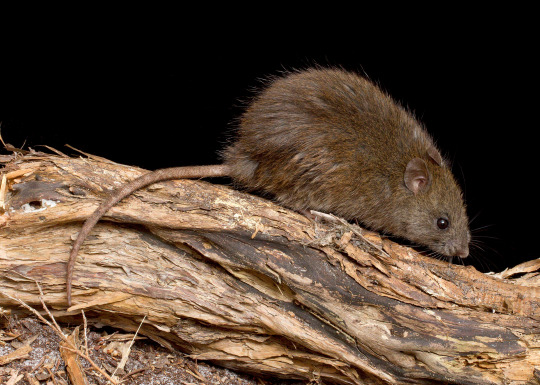
pictured: a cutie
The Project
The 250-hectare headland hasn’t always been a bush rat kingdom, though. Following a century of being vilified and exterminated from areas around Sydney Harbour, the bush rat population in North Head was wiped out decades ago by urbanization, habitat fragmentation, and predation by feral cats and foxes. The reserve was overrun by a gang of black rats, an invasive species that’s found on every continent except Antarctica. While bush rats help maintain the ecosystem’s native species, black rats wreak havoc. At North Head, they wasted no time plundering the burrows and tree hollow nests of small mammals and gorging on bird eggs, says Leo. “They were causing a lot of problems.”
But when given the chance, bush rats can be formidable ecological gatekeepers. In 2014, Leo and her team began reintroducing bush rats to North Head to drive out their intrusive counterparts. The rewilding effort is working, with annual wildlife surveys showing that black rat numbers dropped from an estimated 112 in 2019 to 29 by 2020. In May 2021, a mere nine black rats were captured. The project harnesses the bush rat’s innate territorial streak. The native rodents outcompete black rats for habitat and food, and Leo suspects that North Head will one day be a bush rat–only stomping ground. “If they’ve got the fort, they can maintain the territory,” she says.
For the reintroduction effort, Leo and her team captured 180 bush rats over three years from abundant populations in Muogamarra Nature Reserve and Ku-ring-gai Chase National Park, both located roughly 30 kilometers northwest of North Head. The researchers lured the rats into traps with a wholesome meal of oats, honey, and peanut butter, then assessed the animals’ genes to ensure they were diverse enough to build a flourishing new colony at North Head. After inserting a microchip into each rat, the team set the rodents free on the headland...
The Importance of Native Rodents
While most reintroductions focus on giving threatened species a boost, it’s just as important to prioritize common species in conservation efforts and rewilding projects, says Emily Roycroft, an evolutionary biologist specializing in native mammals and population genetics at the Australian National University. For instance, native rodents act as tiny engineers that shape the ecosystems they inhabit, spreading seeds, churning the soil, and keeping insect populations in check.
Native rodents provide fundamental ecosystem services, says Roycroft, who was not involved in Leo’s project. “We know that if [rodents] were once there, they were playing a role.”
Relocating common species like the bush rat can also provide a good dress rehearsal for riskier reintroductions, adds Roycroft. If something goes wrong when reintroducing a common species, there’s often enough time to tweak the approach and try again. But when researchers are dealing with a species that is on the brink of extinction, they only have one shot to get it right. “It might be the last chance for that particular species to establish a new population,” says Roycroft.
Leo suspects the bush rats have reclaimed their territory for good at North Head, which is now free of feral cats and foxes and protected from urban sprawl. “They’re pretty much established now,” she says. “I think they’ll continue to do well.”” -via Hakai Magazine, 1/11/23
#invasive species#native species#rodents#rats#wild rat#rewilding#reintroduction#endangered species#ecosystems#ecology#good news#hope#australia#ratblr
287 notes
·
View notes
Text
One big thing that gets missed in the conversation about native plants is that when considering a plant, you really should ask two questions:
1. Where, specifically, is it native to?
2. Within that region, what ecosystem conditions does it live in? Will it thrive where you intend to plant it?
I cannot tell you how many times I've come across a plant labeled as native that doesn't even grow in my state. Sure, it's native to the continent, but not this side of the rocky mountains! That's not nearly specific enough if your goal is to support endemic animal species and the overall ecosystem.
You also need to consider what conditions that plant needs to thrive. One example I see a lot of here is planting understory plants in full sun. They're stressed out, they're getting sunburnt, and they're slowly dying. People will also try the reverse, planting praire plants in deep shade, and wonder why they're all floppy and anemic looking. Plants may be native to your area, but they still have specific needs and you will have much greater success if you match the conditions you have to a plant that will thrive there.
A third, extra credit question is a two parter: is it endemic (aka, unique to your region) or does it have a a broader, or even circumpolar distribution? I mean, check out the range maps for Henderson's shooting star & twinflower:

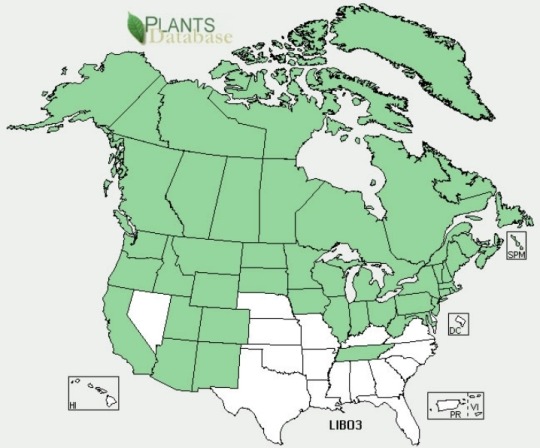
Twinflower is found across the northern portions of Eurasia as well.
The second part is, are any of the vulnerable species in your area depending on it? An example from my area is Viola Adunca, which has a pretty broad range,
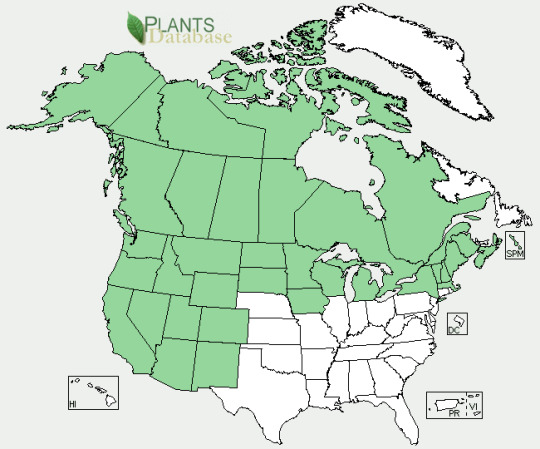
But is also host to multiple fritilary butterfly species in my area, some of which are on the decline and some of which are no longer found in my state. Due to habitat loss. Both due to human activity (agriculture, subdivisions, etc) and human inactivity (banning the intentional burns the Native peoples did, that maintained the Oak savanna ecosystem, leading them to be "invaded" by non-fire adapted Douglas firs, another native species. Also at the same time making the region more vulnerable to bigger and more devastating wild fires).
#gardening#native plants#native species#intentional fires were key to managing ecosystems throughout the west#and when our government killed#removed from the land#and then banned the remaining people from setting fires#we did so much harm to not only the ecosystems but also endangered ourselves#on top of the truly reprehensible behavior we showed to native peoples#I don't think people realize how much we changed the ecosystems here by banning fires#hunting beavers to near extinction#and killing off the bision and turning the land into range land for cattle & sheep
160 notes
·
View notes
Text
Thanks to this individual for creating a petition that finally caught on. I’ve signed many in the past that garnered little support. Now is the time! People are becoming educated and activated!
In case you don’t know why this petition is so important, here’s information from the National wildlife foundation:
“Invasive species can change the food web in an ecosystem by destroying or replacing native food sources. The invasive species may provide little to no food value for wildlife. Invasive species can also alter the abundance or diversity of species that are important habitat for native wildlife.”
#usa native plants#plants#invasive plants#boycott Home Depot#petition#ecosystem#native habitats#plant people#wildlife#gardening#gardeners#pollinators#environment
182 notes
·
View notes